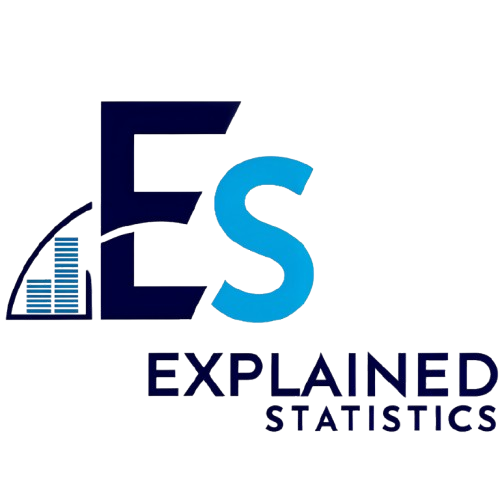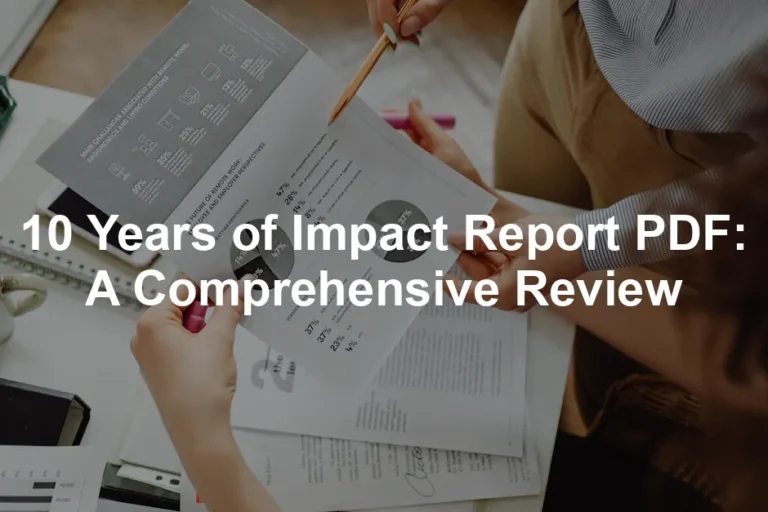Introduction
In statistics, parameters are the unsung heroes. They summarize vital characteristics of entire populations. Think of them as the backstage crew ensuring the show goes on smoothly. Without parameters, our understanding of data would be akin to trying to read a book with missing pages. Enter the parameter of interest—the specific parameter we aim to estimate during our data collection escapades.
Why does this matter? Well, research and data analysis often face limitations like time and budget. It’s not feasible to gather data from every individual in a population. Instead, we use clever sampling techniques to estimate parameters based on a smaller subset.
In this article, we’ll peel back the layers of parameters and their significance in statistical analysis. We’ll define what parameters are, explore the all-important parameter of interest, and clarify the differences between parameters and statistics. By the end, you’ll be equipped with the knowledge to navigate the statistical seas with confidence. Grab your life vests; it’s going to be an enlightening ride!
If you’re looking to dive deeper into the world of statistics, consider picking up Statistical Methods for the Social Sciences. This book is a great resource for understanding the various statistical methodologies used in social science research.

Understanding Parameters in Statistics
What is a Parameter?
A parameter is a value that encapsulates a characteristic of a population. Think of it as the population’s calling card. For instance, the population mean is the average value across all members. The population variance quantifies how much members differ from this average, while the population proportion gives us the fraction of members exhibiting a specific trait.
Imagine a classroom full of students. The average height of all students in that classroom represents the population mean. If you wanted to know how varied their heights are, you’d look at the variance. And if you’re curious about how many students wear glasses, that’s where the population proportion comes in.

Parameter of Interest
The parameter of interest is the specific parameter you focus on during your study. It acts as a guiding star during data collection and analysis. Identifying this parameter is crucial. It determines what data you’ll gather and how you’ll analyze it. For instance, if you want to know the average height of students in your class, the population mean of height is your parameter of interest.
This focus ensures that your data collection is not just a random fishing expedition; it’s a targeted effort to gather useful information. When researchers clearly define their parameter of interest, they can design studies that yield valid and reliable results.
To help you visualize data collection, consider using a Measuring Tape. It’s a simple yet effective tool for accurate measurements during your data collection process.

Differences Between Parameters and Statistics
Parameters and statistics serve different roles in the statistical landscape. A parameter describes an entire population, while a statistic reflects a sample drawn from that population.
For example, let’s say we want to know the average score of all students in a school. The average score is the population parameter. However, if we take a sample of 50 students to estimate that average, the average score of this sample is the statistic.
To illustrate further, consider this: if you asked all the students in a school and found that the average score was 80%, that’s a parameter. But if you only asked 10 students and found their average score was 75%, that’s a statistic. The distinction is clear—parameters are about the whole, while statistics are about the parts. Understanding this difference is key to successful data analysis.

Importance of Identifying the Parameter of Interest
Role in Research Design
Identifying the parameter of interest is akin to picking the right target at an archery range. Miss the target, and you’re just shooting arrows into the void! The parameter of interest shapes your research questions and hypotheses. It tells you precisely what you need to measure and analyze.
For example, if you’re studying the average income of a population, the parameter of interest could be the population mean income. This focus guides your study design, ensuring you collect relevant data to answer your research question. Without this clarity, you risk wandering off course and collecting mountains of data that don’t answer your original query.
Incorrect parameter identification can lead to disastrous outcomes. Imagine conducting a survey on customer satisfaction but mistakenly focusing on product usage instead. Suddenly, your findings become irrelevant. This misstep not only wastes time and resources but can also mislead stakeholders who rely on your results for decision-making. Accurate identification aligns your findings with real-world implications, grounding your research in tangible outcomes.

For those late-night research sessions, a Coffee Maker can be your best friend! Keep that caffeine flowing to ensure you’re alert and ready to analyze all those parameters.
Real-World Applications
The significance of identifying the parameter of interest spans various fields. Let’s take a stroll through some real-world scenarios.
In healthcare, consider a study aimed at determining the average recovery time for patients after surgery. The parameter of interest here is the mean recovery time. If researchers misidentify this as the percentage of patients experiencing complications, the entire study skews off course. Accurate identification ensures that the data collected is relevant to patient care and outcomes.
In social sciences, researchers often explore public opinion. For instance, a political poll may focus on the proportion of voters supporting a particular candidate. Here, the parameter of interest is the population proportion of supporters. Misidentifying this parameter could lead to incorrect assumptions about election outcomes, affecting campaign strategies.
In business, consider a company conducting customer satisfaction surveys. The parameter of interest might be the average satisfaction score. If the focus shifts to individual comments instead, the company risks ignoring critical trends in customer experience. With the right parameter identified, businesses can implement changes that genuinely resonate with their customer base.

Imagine a hypothetical scenario where a company wants to assess employee morale. If they identify the parameter of interest as the average employee satisfaction score but instead gather data on the number of sick days taken, they may misinterpret their workforce’s well-being. This could lead to misguided policies that don’t address the actual concerns of employees.
To help you unwind during breaks, consider grabbing a fun Puzzle Book. It’s a great way to relax and recharge your brain for more data analysis!

These examples illustrate that identifying the parameter of interest isn’t just an academic exercise; it has real-world implications. Whether in healthcare, social sciences, or business, a clearly defined parameter ensures that research findings are relevant, accurate, and actionable. By understanding the parameter of interest, researchers and practitioners can make informed decisions that lead to positive outcomes.
Understanding the significance of the parameter of interest is crucial for effective research. For more insights, check out tips for effective data analysis in economics and statistics.
Point Estimates and Confidence Intervals
Point estimates are single values used to estimate a population parameter. Think of them as the best guess based on sample data. For instance, if you want to estimate the average height of trees in a forest, you might measure a sample of trees and find their average height to be 15 feet. Here, 15 feet is your point estimate for the population mean height of all trees in that forest.
Now, let’s sprinkle in the magic of confidence intervals. A confidence interval provides a range of values that likely contains the population parameter. It’s like saying, “I’m pretty sure the true average height of trees is between 14 and 16 feet.” This range is based on the variability of the sample data and the chosen confidence level, commonly set at 95%. The confidence interval is essential because it quantifies uncertainty. Just remember, it’s not about the probability that the parameter falls within this range; it’s about providing plausible values based on the sample.
To calculate a confidence interval, you use the formula:
CI = 𝑥̄ ± z ( s / √n )
Where:
- 𝑥̄ is the sample mean,
- z is the z-score corresponding to your confidence level,
- s is the sample standard deviation, and
- n is the sample size.
For example, if your sample mean 𝑥̄ is 15 feet, the standard deviation s is 1 foot, and you have a sample size of 30, the 95% confidence interval would be calculated as follows:
- Find the z-score for 95%, which is approximately 1.96.
- Plug in the values:
CI = 15 ± 1.96 ( 1 / √30 ) ≈ 15 ± 0.36
This gives a confidence interval of approximately 14.64 feet to 15.36 feet. And just like that, you have a range that reflects your best guess about the population mean!
Common Mistakes in Estimation
Even seasoned researchers can stumble when estimating parameters. One common pitfall is overgeneralizing results from a small sample to the entire population. Imagine thinking you can predict the behavior of all cats based on the antics of your sassy feline! It’s crucial to ensure your sample size is adequate to reflect the population accurately.
Another frequent misstep is ignoring the confidence interval. Researchers sometimes present point estimates without acknowledging the uncertainty. This can mislead stakeholders into thinking the estimate is exact when, in reality, it’s a best guess.
To avoid these blunders, here are a few tips:
- Always calculate and report confidence intervals alongside point estimates. This adds depth to your findings and showcases the uncertainty.
- Make sure your sample size is large enough to give you a reliable estimate. A small sample may lead to skewed results, much like trying to judge a movie based on a single trailer!
- Remember, sampling methods matter. Use random sampling techniques to minimize bias and ensure representativeness.
By staying aware of these common mistakes, researchers can improve their estimation practices and provide more accurate insights.

Political Polling
Political polling is like a crystal ball for gauging public opinion. It helps us see who’s in the lead and who’s trailing behind. Parameters of interest, such as the proportion of voters supporting a candidate, play a crucial role in this process. For instance, if a poll shows that 60% of voters favor Candidate A, that’s a key parameter of interest. It provides insight into the election landscape and helps campaigns strategize accordingly.
Sampling methods are the backbone of polling accuracy. Common techniques include random sampling, stratified sampling, and cluster sampling. Random sampling ensures every voter has an equal chance of being selected. However, if the sample isn’t representative, the results can be skewed. For example, if a poll only surveys college students, it may not accurately reflect the opinions of older voters. Hence, the choice of sampling method significantly impacts the results and can influence public perception.

Market Research
In the world of business, parameters of interest help companies understand their customers better. For instance, businesses often focus on customer satisfaction rates or average sales as key parameters. By measuring customer satisfaction, a company can determine how well it meets customer needs and identify areas for improvement. If a company finds that 75% of customers are satisfied, that’s a good sign. But if that number drops to 50%, it’s time to reassess strategies!
These estimates are not just numbers on a page; they inform critical business decisions. Companies use this data to shape their strategies, enhance products, and improve customer experience. For example, if market research reveals that customers prefer eco-friendly products, a company might pivot to offer more sustainable options. Thus, understanding parameters of interest in market research is essential for staying competitive and meeting customer demands.

For organizing your business data, consider investing in an USB Flash Drive. It’s perfect for data storage and ensures your valuable insights are safe and sound!
Key Considerations When Working with Parameters of Interest
Assumptions and Biases
When working with parameters of interest, understanding the underlying assumptions in statistical models is paramount. Each model is built on certain beliefs about the data. For instance, a researcher might assume that the data is normally distributed. If this isn’t the case, the conclusions drawn could be misleading.
Biases in sampling can also distort parameter estimates. If a sample is skewed—perhaps it over-represents a particular demographic—the results can be far from accurate. For example, a political poll that primarily surveys young voters might misrepresent the views of older citizens, leading to misguided conclusions about overall voter support.
Moreover, biases can creep in from various sources, including survey design, question wording, and even the timing of the survey. Awareness of these biases is crucial for researchers. They must strive to minimize them to ensure that their parameter estimates are as accurate and reliable as possible. Ultimately, recognizing and addressing assumptions and biases can significantly enhance the credibility of research findings.
The Role of Technology in Estimation
In today’s data-driven world, technology is the trusty sidekick for researchers. There are numerous tools and software that enhance the accuracy of parameter estimation. Think of statistical software like R for Data Science, Python with libraries such as NumPy and Pandas, or dedicated platforms like Minitab. These tools allow researchers to perform complex calculations effortlessly. They provide built-in functions for calculating means, variances, and confidence intervals. This makes the tedious tasks feel like a stroll in the park.
Moreover, advancements in technology have transformed data collection processes. Surveys can now be conducted online, reaching a wider audience with just a few clicks. Tools like Google Forms and SurveyMonkey enable researchers to gather data quickly and efficiently. No more paper forms collecting dust!
But wait, there’s more! The rise of big data has given researchers access to vast amounts of information. This wealth of data can be harnessed for more accurate parameter estimates. Machine learning algorithms can analyze patterns in data, making predictions that were previously unimaginable. For instance, they can identify which factors most influence a parameter of interest, allowing researchers to focus their efforts where they matter most.
The integration of technology is a game-changer. It streamlines the entire process, from data collection to analysis. Researchers can now spend less time crunching numbers and more time interpreting results. This not only improves efficiency but also enhances the quality of research outcomes. In a nutshell, technology is not just a tool; it’s an essential ally in the quest for precise parameter estimation.

FAQs
Please let us know what you think about our content by leaving a comment down below!
Thank you for reading till here 🙂
All images from Pexels




